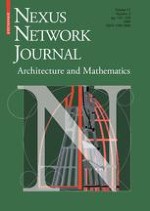2009 | OriginalPaper | Buchkapitel
Cognitive-Mathematical Approaches for Evaluating Architectural Contextual Fit
verfasst von : Natheer Abu-Obeid, Fuad K. Malkawi, Khaled Nassar, Basel Al-eideh
Erschienen in: Nexus Network Journal
Verlag: Birkhäuser Basel
Aktivieren Sie unsere intelligente Suche, um passende Fachinhalte oder Patente zu finden.
Wählen Sie Textabschnitte aus um mit Künstlicher Intelligenz passenden Patente zu finden. powered by
Markieren Sie Textabschnitte, um KI-gestützt weitere passende Inhalte zu finden. powered by
The main goal of this study is to apply a scientific quantitative approach to the investigation of contextual fit. This is approached mathematically within the framework of cognitive science and research on categorization and prototypes. Two experiments investigated two leading mathematical-cognitive approaches for explaining people’s judgment of contextual fit of a new building with an architectural/urban context: prototype approach and feature frequency approach. The basic concept is that people represent the built environment via architectural prototypes and/or frequencies of encountered architectural features. In the first experiment, a group of twelve participants performed rank order tasks on artificially created architectural patterns, for the purpose of psychological scaling. Perceptual distances among all patterns were mathematically determined. In the second experiment, three groups of architectural patterns were constructed to represent assumed architectural contexts. The prototype of each context was mathematically determined according to prototype cognitive model, and based on the distances calculated in the first experiment. Fifty-six students participated in the main experiment, in which they rank ordered a group of fifteen architectural patterns in terms of contextual fit to each of the three architectural contexts. Participants’ rank order data of the fifteen patterns were regressed on both the perceptual distances from prototypes, and numbers of features shared with each architectural context. Results indicated that both prototype and feature frequency approaches significantly accounted for important portions of participants’ judgments. However, participants tended to prefer one approach to the other according to context composition. Results have implications for both research on utilizing cognitive-mathematical models in architectural research and on urban design guidelines and control.
